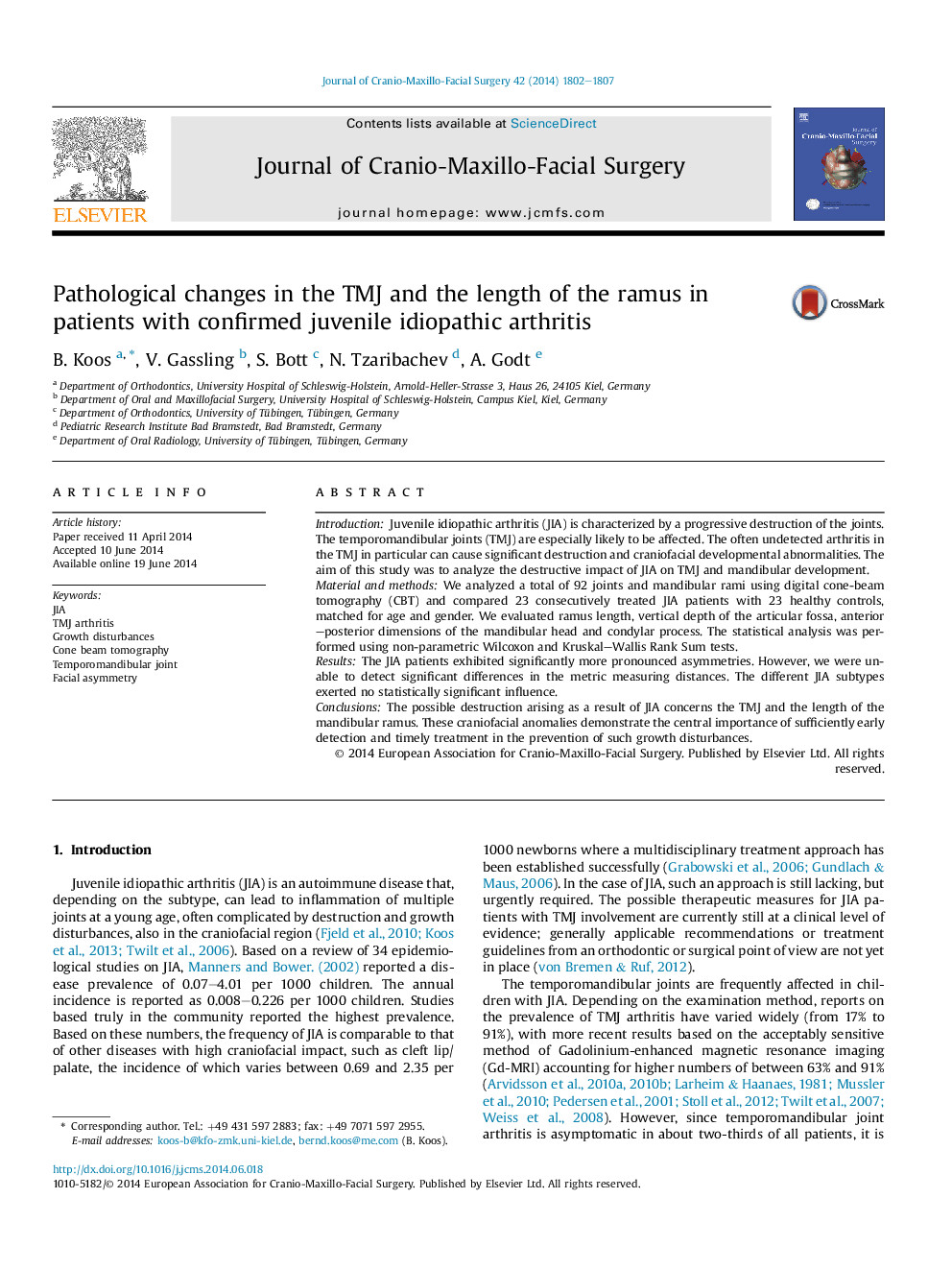| Article ID | Journal | Published Year | Pages | File Type |
|---|---|---|---|---|
| 3142747 | Journal of Cranio-Maxillofacial Surgery | 2014 | 6 Pages |
IntroductionJuvenile idiopathic arthritis (JIA) is characterized by a progressive destruction of the joints. The temporomandibular joints (TMJ) are especially likely to be affected. The often undetected arthritis in the TMJ in particular can cause significant destruction and craniofacial developmental abnormalities. The aim of this study was to analyze the destructive impact of JIA on TMJ and mandibular development.Material and methodsWe analyzed a total of 92 joints and mandibular rami using digital cone-beam tomography (CBT) and compared 23 consecutively treated JIA patients with 23 healthy controls, matched for age and gender. We evaluated ramus length, vertical depth of the articular fossa, anterior–posterior dimensions of the mandibular head and condylar process. The statistical analysis was performed using non-parametric Wilcoxon and Kruskal–Wallis Rank Sum tests.ResultsThe JIA patients exhibited significantly more pronounced asymmetries. However, we were unable to detect significant differences in the metric measuring distances. The different JIA subtypes exerted no statistically significant influence.ConclusionsThe possible destruction arising as a result of JIA concerns the TMJ and the length of the mandibular ramus. These craniofacial anomalies demonstrate the central importance of sufficiently early detection and timely treatment in the prevention of such growth disturbances.
